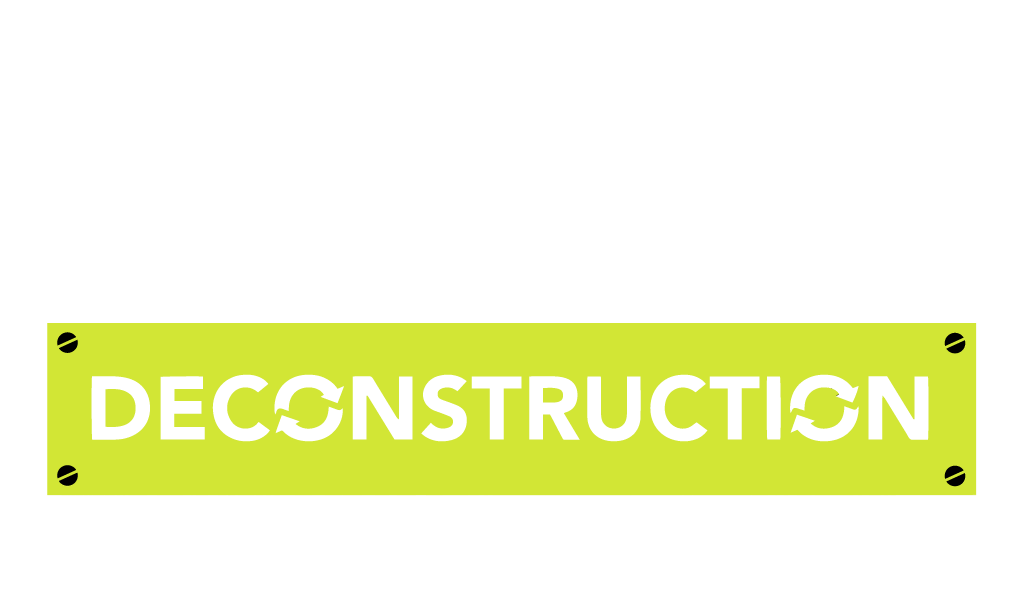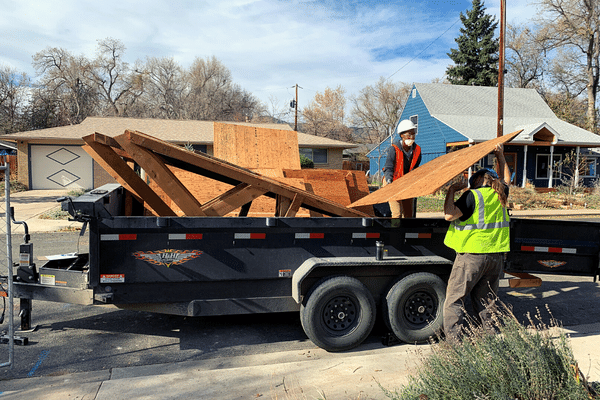What is deconstruction?
How this sustainable alternative to demolition benefits you, the environment, and your community.
Typically, demolition goes something like this: Heavy equipment bulldoze and scrape buildings or houses, creating piles of debris and clouds of dust. Dumpsters are filled to the brim with the broken up remnants, which make their way to a nearby landfill or incinerator.
These conventional demolition practices not only waste recyclable and reusable building materials like brick, concrete, lumber, and appliances; they also create clouds of microparticles that can cover the site in dust and pollute nearby areas.
With deconstruction, demolition is approached with a salvage-first mentality. Materials are reused and recycled whenever possible, and materials that can be donated for reuse become tax-deductible donations for the homeowner/contractor.
About Construction & Demolition Waste in Colorado
In Colorado, demolition waste makes its mark on the waste stream: “Construction and demolition (“C&D”) materials comprise approximately 25% of the solid waste generated by weight in the State of Colorado while contributing anywhere from 25-60% of material going to landfill depending on the region.” (Source: Recycle Colorado) A whopping 40% of all of the state’s landfill waste comes from construction and demolition (C&D) waste. Of that, 90% is waste from demolition. In the United States, twice as much waste is produced from construction projects than from homes and businesses.
The sustainable alternative to demolition
Thankfully, there is a better, more environmentally sustainable option to breaking down homes and buildings: Deconstruction. Unlike demolition practices, which put expediency at the top of the priority list, deconstruction practices put salvaging and recycling materials first. The process is more methodical and labor intensive, and the results benefit the environment and your community, and potentially save you money.
How it works
Deconstruction is a methodical process that takes a surgical approach to dismantling buildings and homes. Crews “unbuild” structures, or take them apart in the reverse order they were built. This allows for materials to maintain the best possible shape and value with the intention of being reused or repurposed down the line. Building materials that can’t be reused or repurposed are recycled whenever possible. At Perks Deconstruction, we work with a network of ethical recyclers and nonprofits to divert as many materials as possible from the landfill, and to help maintain a steady stock of local, eco-friendly supply for local green building efforts.
What structures can be deconstructed
Deconstruction practices apply to a variety of structures, from multi-story buildings with large volumes of concrete, steel, and brick, to small kitchen or bath remodel projects where items can be easily removed and donated. Entire homes and garages can also be deconstructed to salvage materials like lumber, flooring, and more.
Donating used building materials
Instead of taking a sledge hammer to remove items like cabinets/countertops drills and other tools are used to carefully remove materials so that they can be reused or recycled.
Deconstruction practices include salvaging reusable, unwanted household items such as vanities, appliances, and even historical artifacts from older homes and structures. At Perks Deconstruction, we donate all reusable goods to nonprofit organizations, such as The National Center for Craftsmanship, from which homeowners can claim tax-deductible write-offs. Our crew also takes the extra step of de-nailing lumber and flooring, making it another material that is eligible for reuse and tax deductions.
Reclaimed materials = awesome deals
When sold back to the public, used building materials cost a fraction of the cost of virgin materials, making this resource not only more sustainable, but also more equitable. The creation of local stock for building materials also prevents the pollution typically caused by mining, extracting, processing, and transporting virgin materials.
Spread the word with your green building friends
At Perks Deconstruction, we’re on a mission to spread the word on all the great benefits of deconstruction, and to encourage homeowners, contractors, DIYers and fixer uppers in the Denver Metro and Boulder County areas to use reclaimed building materials. Help us spread the word by following us on social media.



